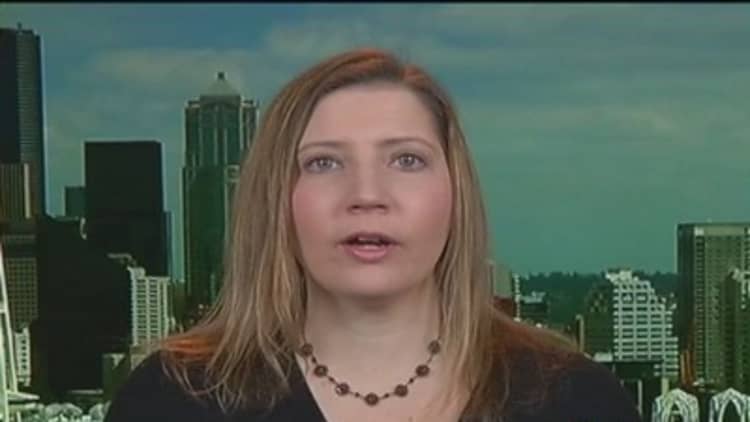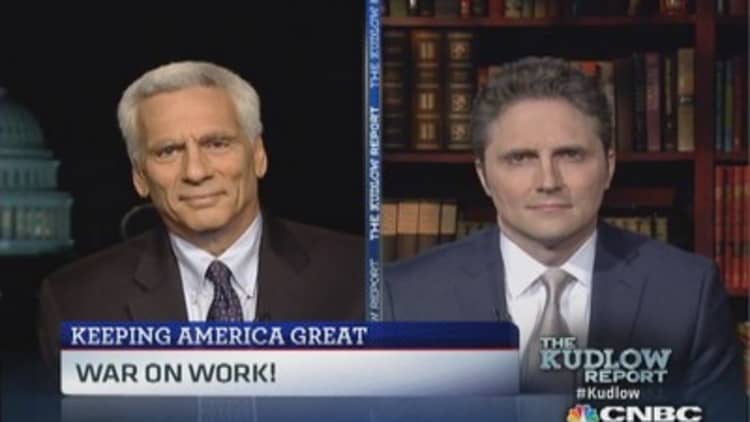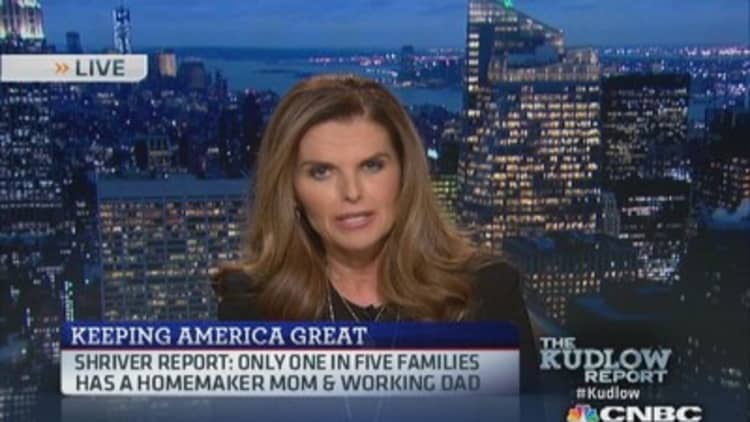
In America's new normal, plenty of people will tumble into poverty at some point—but few will be stuck there.
Nearly one in three Americans experienced a stint of poverty between 2009 and 2011, a new Census Bureau report finds, but only a fraction of those people were stuck below the poverty line for the entire three-year period.
"There's a lot of movement in and out of poverty," said Ann Stevens, director of the Center for Poverty Research at the University of California, Davis.
That's partly because of the weak recovery, in which one small victory can push someone above the poverty line, and a setback can shove him or her right back down.
But it's also because of a longer-running trend toward lower-skilled, low-paying jobs. Permanent, good-paying jobs are largely going to the highly skilled and educated, while many of the rest are living on a knife-edge of economic ruin, where even living paycheck to paycheck seems like a luxury.
"I hear people say 'paycheck to paycheck' and I think, 'Oh my God, that would be great,' " said Jessmynda Dosch-Evangelista.
The 22-year-old from Wellsville, N.Y., makes $5 an hour plus tips at her part-time job as a server at a pizza chain. She rarely knows how many hours she'll be working, or how much money her customers will leave on the table.
(Read more: The poor should stopwhining, says luxury CEO)
That means she also rarely knows whether she'll make enough to pay the rent or put food on her own table.
"It's not even month to month," Dosch-Evangelista said. "It's week to week or night to night."
The Census Bureau report found that 31.6 percent of Americans were in poverty for least two months between 2009 and 2011, versus 27.1 percent between 2005 and 2007. The recession ran from late 2007 to mid-2009.
Those who fell below the poverty line also stayed there longer. The median length spent below the poverty line was 6.6 months between 2009 and 2011, compared with 5.7 months between 2005 and 2007.

This narrower look at monthly poverty statistics is different from the Census Bureau's annual poverty report, which considers the share of the population whose total annual income fell below the poverty threshold for the year. For a single person, the annual poverty threshold was $11,720 in 2012. For a family of four including two children, it was $23,283.
Needing help
The prevalence of short bouts of poverty helps explain why some people who appear to have the trappings of a more economically secure life—a nice car, a home or a flat-screen TV—may also suddenly need help making ends meet.
"You would expect them to have in their households the signs of not having been poor a couple of years ago," said Arloc Sherman, senior researcher with the Center on Budget and Policy Priorities, a liberal-leaning think tank.
(Read more: The economics of quitting your job)
It also explains why, in recent years, so many Americans have had to rely—at least for a few months—on programs such as unemployment benefits or food stamps.
That's been the case with Dosch-Evangelista.
During a good period, she said, she might be scheduled for plenty of shifts and bring in enough tips to feed herself and her cat, as well as buy necessities such as soap and toilet paper.
But then come the bad periods, like the one right before the holidays in which she said she didn't get any shifts at all for a while and had to turn to social services for emergency help with her monthly rent of $435.
Even when things are good, Dosch-Evangelista has little wiggle room.

She doesn't have a car and tries to avoid even taking the bus, preferring to walk if she can to save the 50-cent fare. She rarely goes out with friends but is too ashamed of her apartment to have people over.
The report also showed that a large number of people who got out of poverty had not made it that far and were just barely above the poverty line.
"A lot of people either experience poverty or skate very close to the line," said Sherman at the Center on Budget and Policy Priorities.
Risky situation
Dosch-Evangelista said that she was better off financially when she was getting cash assistance. She still gets benefits through SNAP, the modern food stamp program, but said she is proud to have a job and not be taking cash aid except in extreme emergencies.
(Read more: Yellen sees better economy, less money printing)
"I'd rather work a crappy job and take the risk from week to week of losing my apartment than be on welfare, and I'm hoping that says something about me," she said.
Dosch-Evangelista hopes that the situation will improve when she starts a second job helping out with basic duties at a group home. Though she expects the pay to be minimum wage, the extra hours should mean more money every month.
In the long run, she hopes to finish college and eventually start an agency to help people like herself, who were adopted in their late teens. She's taking a break from school because of the financial stress but is confident that she will get back eventually.
"I'm not rosy-eyed about it, but I'm optimistic, I guess," Dosch-Evangelista said of the future. "I'm trying to be realistic."
—By CNBC's Allison Linn. Follow her on Twitter @allisondlinn and Google or send her an email.


